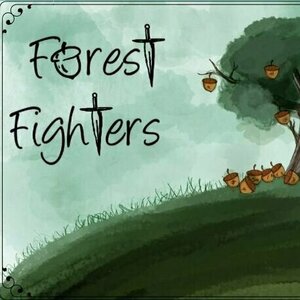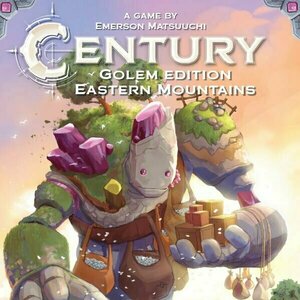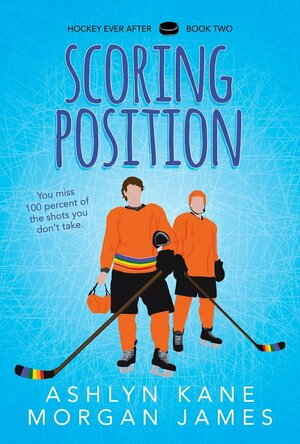
Scoring Position (Hockey Ever After #2)
Book
Ryan Wright’s new hockey team is a dumpster fire. He expects to lose games—not his heart. ...
Contemporary MM Sports Romance
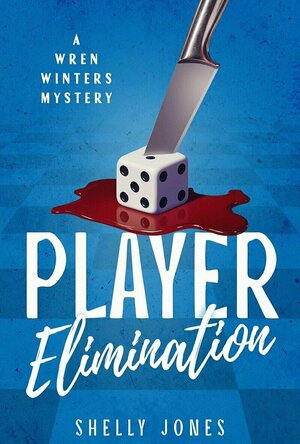
Player Elimination
Book
She loves to play games, but not when it comes to murder. Wren Winters is a businesswoman on a...

Football Director 2017
Games and Sports
App
Welcome to Football Director 2017, one of the best football soccer manager type games. As fast paced...

Election Manager 2016
Games and Education
App
Have you ever wondered what if? What if 2016 had gone differently, if perhaps your candidate had had...
Purple Phoenix Games (2266 KP) rated Forest Fighters in Tabletop Games
Oct 22, 2020
Forest Fighters pits players against each other, being rival squirrel clans preparing to gather acorns for the winter. Only one clan can succeed because there is but one oak tree in the entire forest from which acorns may be gathered. Players will be recruiting other animal species onto their side by way of deck building game mechanics and using gained cards to send to battle against their opponents.
DISCLAIMER: We were provided a copy of this game for the purposes of this review. This is a retail copy of the game, so what you see in these photos is exactly what would be received in your box. I do not intend to cover every single rule included in the rulebook, but will describe the overall game flow and major rule set so that our readers may get a sense of how the game plays. For more in depth rules, you may purchase a copy online or from your FLGS. -T
To setup, separate the cards into their respective decks. Deal each player five Forager Squirrels, two Acorns, and three Blackberries. This creates the 10 card deck players will shuffle and begin the game playing. Players will also choose 12 other animal deck types to use for the game and display all the decks within reach of all players. Each player will then draw the top five cards from their shuffled deck to create their starting hand. The game may now begin!
On a turn a player will use all the cards from their hand to purchase new cards from the main display to be added to their discard pile, like every other deck building game out there. The cards have multiple uses, however, and up to two currency values. Most animals will be recruited using Food (like Blackberries and Honey), and Food cards can mostly be obtained by using Forage values. Example: the starter Forager Squirrel can be used as one Food, one Forage, or even one Attack.
Speaking of Attack, on a player’s turn, should they be done shopping for other cards, they may attempt to attack an opponent using animal cards in their hand. Players will add up the Attack value on the cards they wish to use and declare an opponent who will reveal cards whose Defense value meets or exceeds the Attack value. Should the attacker win they will be able to take possession of Blackberries and Honey cards in the loser’s hand, send an animal back to its stack, or take all the Acorn cards. Acorns are both VP and the determining factor in ending the game; once all Acorn cards have been purchased the game is over.
Each animal card recruited will also have a special ability that can be used during a turn, and some of them are quite powerful. Turns continue in this fashion until either all Acorns have been purchased or all players except one have been eliminated. A player is eliminated once they can no longer purchase cards and have no more animals in their deck.
Components. Let me tell you about the good and the okay. The rulebook is a small pamphlet style that has only five pages of rules. And honestly, if you have played deck builders before, could have only taken one page. I like that. There is just enough information to get the game going, but doesn’t explain every card’s abilities, or throw in three pages of game art. Similarly, if any questions arise with card abilities, the card dividers provide more text to help clear up the questions. The cards are all good quality, and there are a ton of them.
The okay part of the game is the art on the cards. It is not at all bad, but it could use a different art style to be a bit more attractive. The last little concern I have is the design of the box. The size, shape, color, and all that is fine. What I wish was different was having the title of the game on all sides. My shelves are organized in a way that I try to pack as much as I can into the space by orienting the boxes to be as small and deep as possible so that the smallest side of the box is showing. I cannot do that with Forest Fighters because the smallest sides have a few art slides and credits. Honestly, this isn’t quite as egregious as some games (I’m looking at you, Oceans), so it’s not a huge deal, but worth mentioning for me.
All in all the game is a solid deck-builder with that extra bit of attacking and stealing from opponents. I have never been a fan of Dominion as I find its themelessness boring and its mechanics antiquated. Now, I think I might be able to use Forest Fighters as a gateway deck builder that is more interesting, but still considered light for new gamers.
I am kind of sad that I missed the Kickstarter for this one because I would have liked to have splurged for the higher tier (those yummy extras), but I am happy to have added Forest Fighters to my collection. I believe it is a great entry into deck-building and if you are looking to find a similar game with a cute theme, an interesting new take on the genre, and can play up to five comfortably, then I recommend you give this one a try. I think you’ll like it. Just don’t ever use the raccoons against me or I will be attacking you every turn.
Purple Phoenix Games (2266 KP) rated Century Golem: Eastern Mountains in Tabletop Games
Apr 21, 2021
The second game in the Century: Golem Edition trilogy is Century: Golem Edition – Eastern Mountains (referred to as just Eastern Mountains for the rest of this review). Players return to their roles as crystal traders, mining and trading crystals. You’ve achieved success in your home village, but now have decided to venture out into the mountains of Carvania, in hopes of creating a vast network of trade throughout the land.
Disclaimer: Eastern Mountains is a standalone game, but also comes with a ruleset for The Call For Adventure – with which you can integrate both Century: Golem Edition AND Eastern Mountains into one big game. This review is of Eastern Mountains only and does not delve into the gameplay for The Call For Adventure. When we add that additional content to Eastern Mountains, we will either amend this review or write a new post altogether! -L
Eastern Mountains is a game of point-to-point movement with a modular board in which players are mining/trading crystals to fulfill Village requirements and receive end-game VPs. Set up the game tiles as described in the rules, and each player receives a player board, wagon, and outposts in their chosen color. From the starting crystal options, players select and add their starting crystals to their player boards, place their wagon on any mountain tile, and the game is ready to begin!
Played over a series of rounds, players take turns moving their wagon and performing one action. To begin a turn, you may move your wagon to an adjacent tile for free. You can always choose not to move on your turn if you wish! If you want to move more than 1 mountain tile, you may do so, but you must place a single crystal from your player board onto each tile you leave. As long as you have crystals to pay, you can continue movement. If you end your movement on a tile with another wagon, you must pay each other wagon owner 1 crystal from your board. After you are done moving your wagon (or not moving), you may perform one of the following actions: Trade, Village, or Mine.
To perform the Trade action, you must first have an outpost on that tile. The cost to build an outpost varies by player count and number of outposts already on that tile. Outposts are paid for with crystals from your board. You then take the leftmost outpost from your board in the row that matches the trade symbol on the mountain tile, and place it on that tile. When building an outpost, if you empty a vertical column on your board, you may immediately choose a bonus tile to use for the remainder of the game. Once you have an outpost on a mountain tile, you may perform the Trade action. To Trade, exchange the crystal(s) listed above the arrow for those listed below the arrow. You may perform the Trade action as many times as long as you have the appropriate crystals to exchange.
Village tiles, placed on the four corners of the ‘board,’ each have 1 face-up VP tile atop them. If you move your wagon to a Village tile, and you have the appropriate crystals shown on that VP tile, you may perform the Village action by returning those crystals to the supply and claiming that VP tile. Draw a new VP tile to place on the village, and your turn is over. To perform the Mine action, you simply take 2 yellow crystals from the supply. This action can be performed from any tile. The end of the game is triggered once a player has claimed their 4th VP tile. The round ends as normal, and then VPs are tallied. You earn VPs from VP tiles, some bonus tiles, and for uncovered outpost spaces on your player board. The player with the most VP is the winner!
So, for pre-ordering Eastern Mountains blindly, with no intel about it at all, I am happy to report that it did not disappoint! Eastern Mountains takes everything I love about Century: Golem Edition and takes it to the next level. Let’s dive into strategy first. Eastern Mountains takes the strategic element of trading/upgrading crystals to the next level by adding a modular board. Instead of drafting cards to your hand, you have to physically move your wagon across the tiles to perform those chosen trades. And since you can only move 1 tile for free, you really have to strategize how to manipulate your crystals in the fastest ways possible to fulfill the Village tile VPs. Can you find a combination of tiles that can churn crystals out for you? Or are they scattered across the board, thus forcing you to adjust strategy to gain new crystals? With the modular board and random tile setup, every game is going to be different, and will require a different strategy for success.
The other strategic element that I love in Eastern Mountains is that all information is known by all players. You know what crystals (and how many) your opponents have, you know the trade powers in play, you can see where your opponent has built outposts, and you can see the VP requirements on the Village tiles. Obviously, you can’t read your opponents’ minds, but all of this public information could give you a glimpse into their strategy. And that could affect your strategy as well! You’re always thinking in this game, and I love that.
Moving on to components – high quality stuff! All of the mountain tiles are thick and sturdy cardboard, the wagon and outpost meeples are chunky and easy to handle, and of course the crystals are beautiful and fun to play with! One thing that really drew me to Century: Golem Edition was the colorful and awesome artwork. In Eastern Mountains, that artwork really doesn’t shine through as much. The theme is still there, but not as evident as in the first game. Overall, though, still a colorful and pretty game!
Plan B Games absolutely hit the mark with Eastern Mountains. It is extremely strategic, engaging, and entertaining. A highlight is the fact that it has a modular board. The setup possibilities are endless, and replayability is no concern for this game. Eastern Mountains is a wonderful sequel to Century: Golem Edition, and it was definitely a great investment for me. If you enjoy Century: Golem Edition, I highly recommend that you give Eastern Mountains a try. It might surprise you! Purple Phoenix Games gives Century: Golem Edition – Eastern Mountains an 11 / 12.
Purple Phoenix Games (2266 KP) rated Fossilis in Tabletop Games
Feb 17, 2021
Fossilis is a game of set collection and tile placement in which players are working to excavate and collect sets of dinosaur bones for display in museums across the world. To setup for a game, prepare the dig site as described in the rulebook. Populate the Score Track board with 9 random Skill tokens, 3 face-down randomly selected Event cards, and a Plaster pool based on the player count. Create a Market of Tool and Supply cards, as well as a Dinosaur Display. Each player receives a mat, Paleontologist meeple, and score marker in their chosen color. Pick a starting player, and in reverse turn order, players place their Paleontologists onto a corner tile of the dig site. The game is now ready to begin!
Every players’ turn has 3 steps: Actions, Market, and Lab. At the start of your turn, you have 4 Energy to spend on Actions. The available action choices are: Gain 1 Plaster (from the Plaster pool), Move up to 2 spaces (orthogonally or diagonally), Climb onto the Dig Site (if your Paleontologist was knocked off the board), Place 1 Sand tile (anywhere on the Dig Site), Dig 1 tile (slide a terrain tile 1 space in any direction), or Extract (excavate a bone/hammer). With the exception of Digging, all other Actions cost 1 Energy to perform. Digging 1 tile costs energy dependent on the type of terrain tile being moved. To dig Sand is 1 Energy, Clay is 2, and Stone is 3. To Dig, you select 1 tile that is orthogonally adjacent to your Paleontologist, and slide it 1 space in any direction you wish. Tiles that are pushed off the edge are claimed by that player, and can be used to purchase cards from the Market. It is possible for a Paleontologist to be pushed off the Dig Site, so watch out! To perform the Extract action, you will excavate a bone or hammer from an open pit orthogonally adjacent to your Paleontologist. Extraction costs Plaster dependent on the type of bone being collected. For example, extracting a tooth costs 2 Plaster, while a skull costs 6. Extracting hammers has no cost, and you immediately trade the hammer for one of the available Skill tokens in play. The Skill tokens provide benefits for the remainder of the game. Once a player has spent their Energy, they move to the next phase.
On your turn, you may buy 1 card from the Market: either a Tool or Supply card. These are purchased using the icons on any tiles you collected during the Action phase. Supply cards gain you immediate resources, while Tool cards are saved for use during a future Action step. After the Market phase is the Lab phase. You may claim a Dinosaur from the Display if you have at least one of the required bones for that Dinosaur. You can only ever have 1 Dinosaur in your Lab at a time, so strategize carefully. At any point during a turn, you can score the Dinosaur in your lab – either for full points if all required bones are present on the card, or partial points if you only have some of the required bones.
Events are triggered 3 times throughout the game when the Plaster pool has been depleted. The active player draws the top Event card, and follows the instructions on the card. Once an Event has been performed, the Plaster pool is refilled and play continues with the next player. After the 3rd event has been triggered, the Plaster pool is refilled one last time. When the last Plaster pool is depleted for this final time, the game ends. Players count up all their points, and the player with the highest score wins!
At first it may seem overwhelming, like there is a lot going on, but after a couple of turns the gameplay feels intuitive and streamlined. There are quite a few aspects to keep track of, but the overall flow of the game makes it feel clear and concise. During my plays, I have never once felt lost or confused as to what the next turn step is. The tight gameplay also lends itself to providing a variety of strategic options for players. Do you want to go for all the highest-scoring Dinosaurs, even though their bones take longer to collect? Or maybe you want to snag as many lower-scoring Dinosaurs as possible, since they should be faster to collect. You can earn end-game points based on Characteristic sets of Dinosaurs (carnivorous, herbivore, etc), so maybe you decide to focus on those sets. Or if you’re in a particularly confrontational mood, maybe you want to knock opposing Paleontologists off the Dig Site, causing them to ‘waste’ an Energy on a future turn just to climb back on into the play area. There really is no right answer as to what strategy is a sure-win, and I like that I can choose and adapt my strategies based on the current standings in the game.
Probably my favorite innovative mechanic in Fossilis is the 3D terrain and ‘digging’ actions. When setting up the game, bones and hammers are randomly scattered and distributed around the Dig Site before terrain tiles are added. So there is absolutely no way to know where you should dig for what you want! Just like a real paleontologist, you’ve got to give it your best guess. I have had some frustrating turns, spending lots of Energy to dig a tile just to find the space to be empty! Or maybe you dig and hit the motherlode, which just means you’ll probably have to fight off other paleontologists for the bones that you need. The 3D board adds another element of strategy that heightens the gameplay and makes it more immersive.
Let’s touch on components for a moment. They are AWESOME. Admittedly, I have the Kickstarter version, but I just love how well-produced this game is. The terrain tiles are nice and thick bakelite-esque tiles, and they are just dang fun to manipulate. The plaster and bones are small, but pretty detailed and sturdy for their size. The artwork on the cards is colorful and clear, the Paleontologist meeples are cute little wooden bits, and the cardboard bits are all good quality. Excellent production quality all around.
It should come as no surprise, based on my score, that I love this game. The gameplay is immersive and engaging, the mechanics add a neat twist to your normal set collection/tile placement game, and the ability to adapt strategy on the fly means that nobody is truly out of the game because of one bad turn. Purple Phoenix Games gives Fossilis a roaring 11 / 12. If you’re looking for a good dinosaur game, look no further. Yeah, they’re technically just bones here, but it still counts!

Shadow and Light (Arizona Raptors #3)
RJ Scott and V.L. Locey
Book
Is it easier to fall into the shadows than hold onto the light? Injured in a horrific car...
Contemporary MM Sports Romance

Futaba Classroom Games for Kids
Education and Games
App
Turn your iPad into a small Smart table with for up to four players at once. * Featured on...
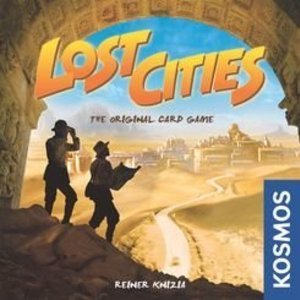
Lost Cities
Tabletop Game
Lost Cities is a card game in the Kosmos two-player series. The game consists of a single deck of...
Boardgames Cardgames GoodForTravelGames 2playerGames KosmosGames
